2017 Ford Mustang GT California Special
| The Good: – Attractive all-round styling – Improved multimedia tech – Power, ride and handling |
The Bad: – More expensive than ever – Tight rear seating – Some hard cabin plastics |
The current Mustang was controversial when it first debuted in late 2014, with many accusing Ford of making the traditional muscle car softer in terms of design. Time is a healer though, and everyone has come to appreciate the latest styling, ditching the retro for the modern. Ford also offers the ever-popular GT 5.0 variant in a trim dubbed the California Special. We tried out two of these Specials, one a coupe and the other a convertible. We’ll focus on the convertible since we’ve reviewed the coupe before.
The new Mustang is a new-from-the-ground-up design. Longer, wider and taller than before, there are attractive intricate details such as the sharp chin spoiler and the chrome trim around the tail lamps. There’s also no easy way to tell your “5.0” apart from the EcoBoost and V6 models, aside from badges and wheels mainly. The California Special pack adds black bonnet vents (which also have indicators embedded in them as an homage to a useless option from 1967), black decals along the sides, black mirrors and rear spoiler, and unique machined-aluminium wheels with black details.
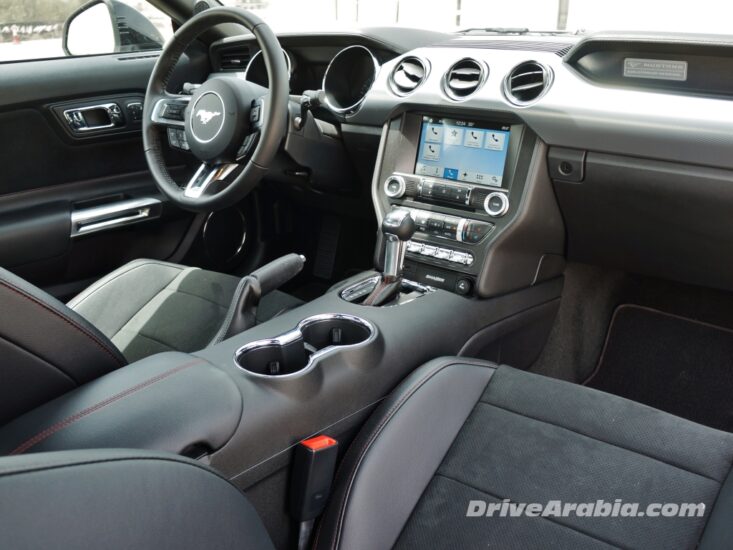
The interior still uses retro design elements from the previous model, with a soft-touch dash-top, chunks of metal dash trim and well-padded leatherette door inserts. There are still hard-plastic panels in the lower half of the cabin, as well as on the upper door panels (soft-touch door panels are reserved for the Premium trim). With pretty gauges, a big LCD touchscreen and metal toggle switches for certain functions, the ambience is characterful, with better outward visibility and general airiness than the Chevy Camaro.
For 2017, the Mustang GT comes with the upgraded SYNC 3 multimedia touchscreen with better capacitive response, smoother interface and properly-integrated navigation. Other features include Bluetooth, blind-spot monitoring, partially power-adjustable leatherette seats with heating and cooling functions, a good dual-zone auto a/c, smart keyless entry and start, adaptive cruise control, HID headlights with LED running lamps, fog lamps and more. Interesting gimmicks include side-mirrors that throw pony-shaped lights on the ground as you enter, and the possibility to change the colours of the in-car mood lighting.
While very spacious up front, the rear seats are still not fit for adults, but they fit two baby seats just fine. Access to the rear also remains tight, unless you have the convertible with the roof down. The boot is of a very useable size, and fit two prams surprisingly well. There are door pockets, an under-armrest cubby with USB/AUX ports, the usual glovebox and two open cup-holders up front, but otherwise there’s no other place to keep your phone.
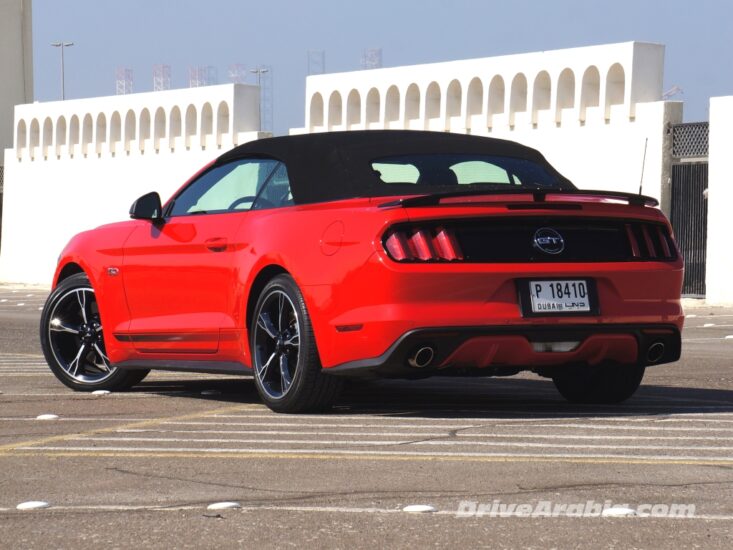
In terms of engines, there are the aforementioned base 300 hp 3.7-litre V6 and mid-range 325 hp 2.3-litre turbo-4 options, but — ignoring the Shelby models — the most desirable version remains the GT with the 5.0-litre V8, now making 435 hp at 6500 rpm, with 542 Nm of torque at 4250 rpm. During our December test, a brake-torque launch at around 2000 rpm with stability control off produced a 0-100 kph time of 5.4 seconds, about the same as the crude old GT. The transmission in our test cars was a 6-speed automatic, now with paddle shifters if you wish to use them, although a manual gearbox is also available. The rear wheels put the power down on the tarmac via sticky 255/40 tyres, wrapped around 19-inch alloys. Our car burned petrol at a rate of about 15.5 litres/100 km, as per the trip computer, which is respectable for a V8.
The latest Mustang now comes with independent rear suspension, unlike the solid axle of old, which makes it remarkably more refined than the outgoing model. Fair feedback and instant responses to inputs from the moderately-weighted steering and linear-acting brake pedal, as well as a willing 6-speed automatic gearbox in ‘sport’ mode, make it a pleasure to drive without “modern” annoyances such as laggy dual-clutch trannies or grabby brakes that afflict many European sports cars. While the old Mustang had an odd tendency to want to powerslide around every corner, even at low speeds, the new one feels less frisky on a city drive.
There’s also tons of grip around corners, with minimal body roll and neutral behaviour. The Brembo brakes are strong enough for hasty street driving. There is a slight floatiness over certain road imperfections, likely a side-effect of a more compliant ride. However, its American rivals — the Chevy Camaro and the Dodge Challenger SRT 392 — have caught up and surpassed it in terms of handling. We drove all three back-to-back. And since Ford doesn’t offer the Performance Pack here, it shall remain so until the Mustang’s next iteration.
Indeed, the new Mustang rides softer and quieter than any before it. Mind you, it’s no Rolls-Royce, as those low-profile rubbers do pick up some of the harsher bumps, but it’s a car you can easily commute in now. Wind noise is still noticeable at highways speeds, and a bit more in the convertible with the top up, but it’s entirely bearable.
The Mustang is now refined — about as refined as a 435 hp rear-driven car can ever be. It still has defeatable traction control and even a line-lock feature to make burnouts easy, if you fancy that sort of thing. It costs a fair bit more than older Mustangs, and doesn’t handle as well as either of its rivals from Chevrolet and Dodge, yet it’s still the most practical grand tourer out of all three as a balance between cabin space and outer size. But there is a heavily-updated Mustang GT coming for 2018, and it promises to be better than ever.
| Price Range: Dh 195,000-200,000 Current Model Introduced in: Body Styles: Engines: Transmissions: Setup: Suspension: |
Brakes: Front: discs Rear: discs Curb Weight: Length: Wheelbase: Top Speed: Test Acceleration 0-100 kph: Observed Test Fuel Economy: |
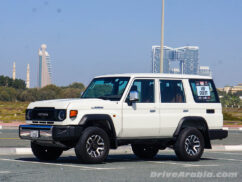
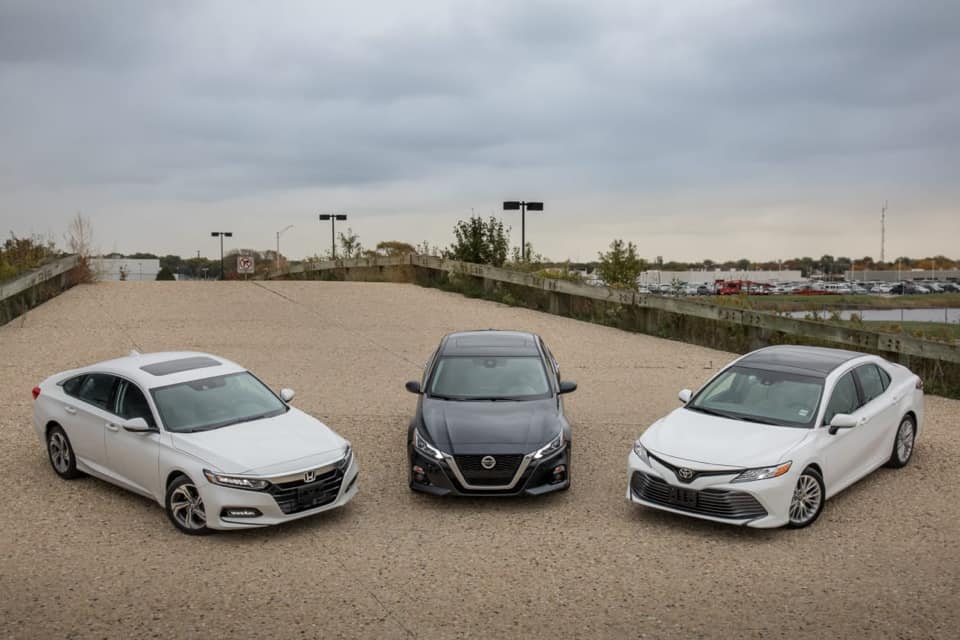
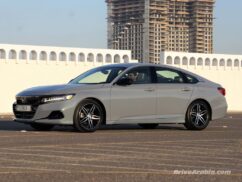
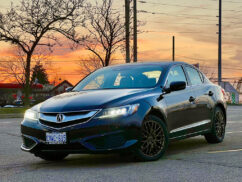
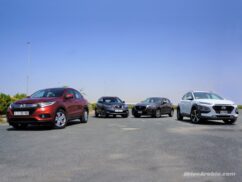
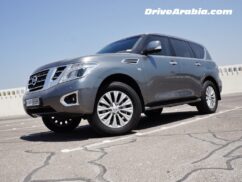
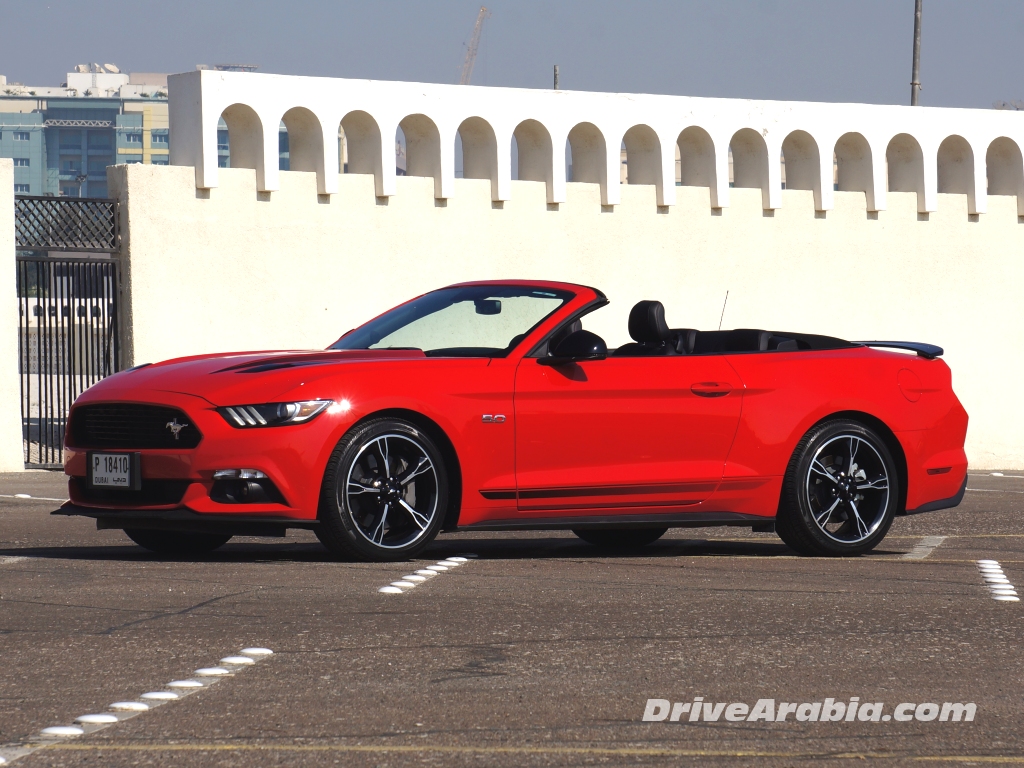
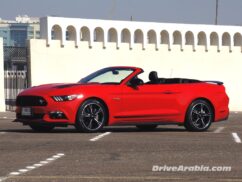
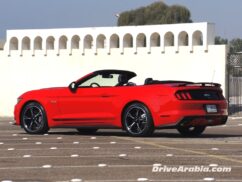

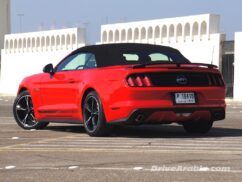




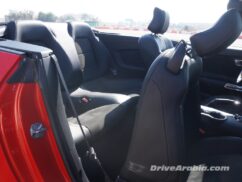
Comments
Leborde
I think 15.5 l/100 is not respectable but is indeed horrible !
Also, the safety rating of this car is apparently one of the worst.
Maybe these 2 explain the price of the car?